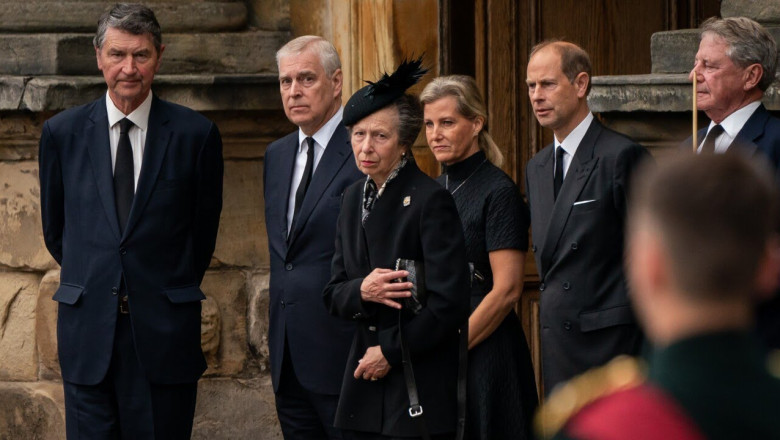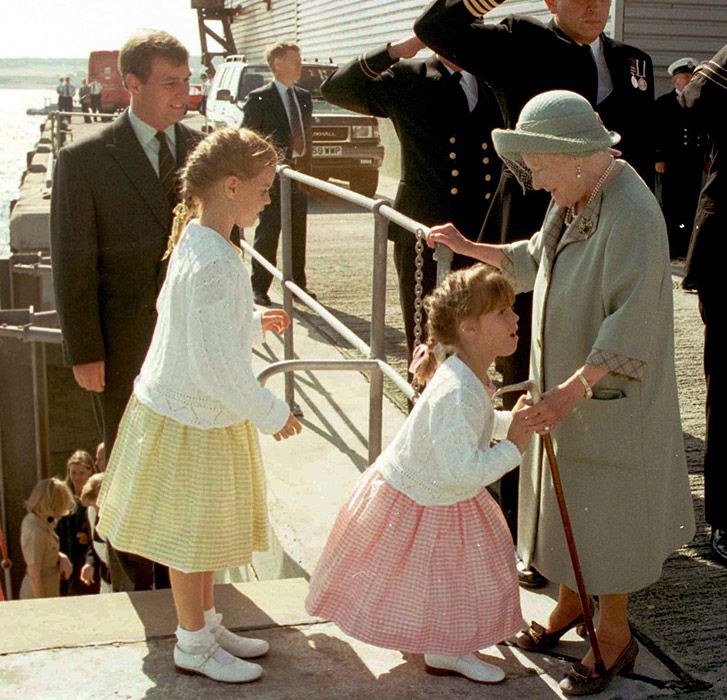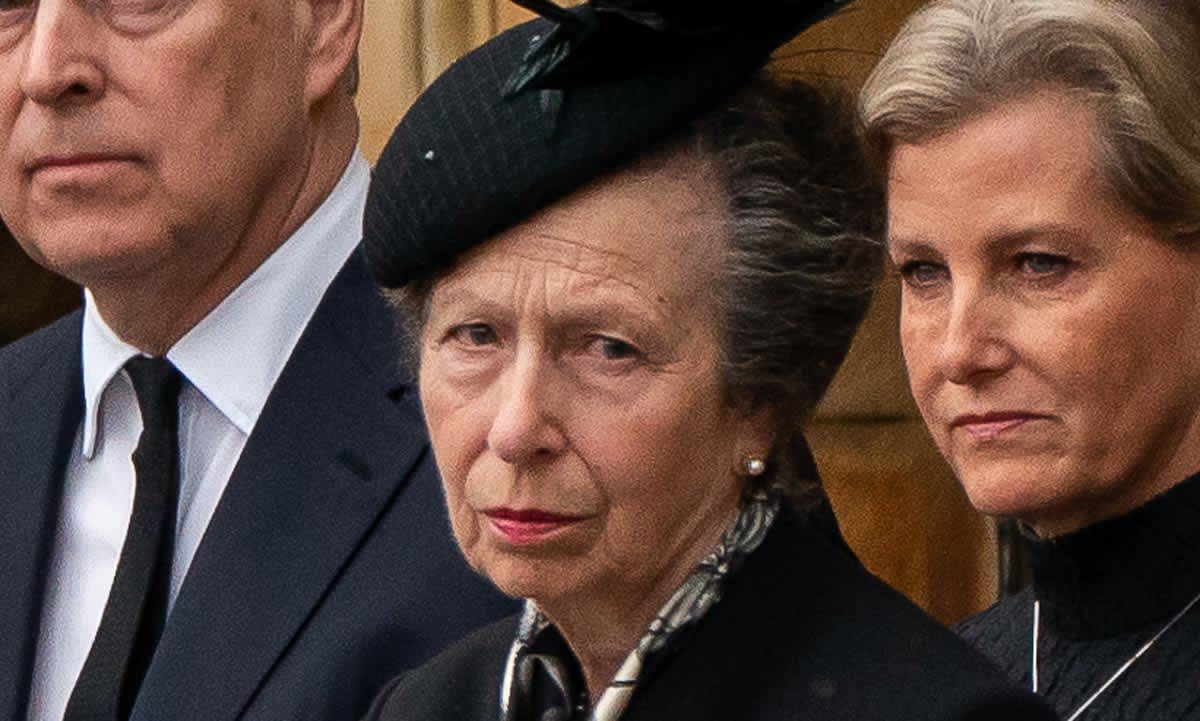Have you ever wondered about the intricate dance of royal etiquette, particularly the question: Did Princess Anne curtsy to her mother? It's a query that, you know, often pops up among those fascinated by the British Royal Family. Royal customs, so it seems, hold a unique place in public interest, and the ways members of the family interact often spark a good deal of discussion.
The smallest gestures within the monarchy, like a simple bow or a dip of the knee, carry a lot of meaning. These actions, you see, are not just random movements. They are, in fact, steeped in centuries of tradition and show respect within a very specific hierarchy. It's quite a thing to observe, really.
Today, we are going to look closer at this very specific question about Princess Anne and her late mother, Queen Elizabeth II. We will explore the long-standing rules that govern these interactions. So, let's get into the details of what is expected, and perhaps, what we actually see.
Table of Contents
- Princess Anne: A Royal Profile
- The Curtsy: A Symbol of Respect
- Royal Protocol: Unwritten Rules and Traditions
- Did Princess Anne Curtsy to Her Mother? Examining the Evidence
- Beyond the Surface: Perceptions and Understanding
- FAQs About Royal Curtsies
- The Enduring Appeal of Royal Customs
Princess Anne: A Royal Profile
Princess Anne, the Princess Royal, holds a very significant place within the Royal Family. She is, you know, the only daughter of Queen Elizabeth II and Prince Philip. Her life has been one of dedicated public service, really.
She is known for her practical approach and her strong work ethic. Many people, in fact, admire her no-nonsense attitude. She has, basically, taken on many duties over the years, supporting her mother's reign with steadfast commitment. It's quite something to see.
Her public engagements are, like, numerous, and she often undertakes more of them than many other family members. She is, you know, a patron of over 300 organizations. This work covers a wide range of areas, from sports to charities. She really is a very busy person.
Personal Details and Bio Data
Here are some basic facts about Princess Anne, just so you have the details:
| Full Name | Anne Elizabeth Alice Louise |
| Title | Princess Royal |
| Born | 15 August 1950 |
| Parents | Queen Elizabeth II and Prince Philip, Duke of Edinburgh |
| Spouses | Mark Phillips (m. 1973; div. 1992), Timothy Laurence (m. 1992) |
| Children | Peter Phillips, Zara Tindall |
| Main Role | Engaged in public duties and charity work |
The Curtsy: A Symbol of Respect
The curtsy, you see, is a traditional gesture of respect. It is typically performed by women when greeting a monarch or a person of higher social standing. It involves, basically, a slight bending of the knees and a small dip of the head. It's a very old custom, really.
This gesture, so it is said, dates back centuries. It evolved from a deeper bow, showing a person's humility or deference. For royal families, it is a way to acknowledge the sovereign's position. It is, you know, a visual sign of the hierarchy.
In the British Royal Family, the curtsy is a part of the long-standing protocol. It's not just a polite greeting; it signifies recognition of the Crown. It’s a tradition that, frankly, many find quite fascinating. It really does add to the ceremonial aspect of royal life.
The depth of the curtsy can, in some respects, vary. It might be a very quick bob or a more pronounced dip. This often depends on the setting and the formality of the event. Public appearances often call for a more visible show of respect, you know.
It is, in a way, a silent language. It speaks volumes without a single word being uttered. The curtsy shows a connection to history, and it reinforces the traditional roles within the monarchy. It's a very interesting custom, really.
Royal Protocol: Unwritten Rules and Traditions
Royal protocol is, basically, a set of unwritten rules and customs. These rules guide the behavior of members of the Royal Family and those who interact with them. They are, you know, passed down through generations. They are not, like, always written down in a book.
These traditions cover everything from seating arrangements to dress codes. They also dictate how one should address a royal and, of course, how one should greet them. It's a system that, apparently, helps maintain order and respect within the institution. It's quite a complex setup, really.
The rules are, in some respects, quite strict. Yet, they also adapt, just a little, over time. They are, you know, a blend of history and current expectations. Understanding these rules helps us see why certain actions, like curtsying, are important.
Many of these protocols are, basically, about showing proper respect for the sovereign. The monarch is the head of state and the head of the Royal Family. So, actions like curtsying are a way to acknowledge that top position. It's a very important aspect of their daily life, really.
Who Curtsies to Whom?
Within the Royal Family, there is a clear order of precedence. This order, you know, determines who curtsies or bows to whom. Generally, female members of the Royal Family are expected to curtsy to those higher in rank. It's a very straightforward system, basically.
This means that, typically, a Princess would curtsy to the Queen. This applies, you know, even if that Princess is the Queen's daughter. The rank of monarch, you see, takes precedence over family ties in a public setting. It's a matter of showing respect for the Crown itself, not just the person.
So, female royals like the Princess of Wales or the Duchess of Edinburgh would curtsy to the monarch. This is, apparently, a long-standing practice. It applies to all women who are part of the family, or who marry into it. It's a rule that, generally, everyone follows.
Male members, on the other hand, perform a neck bow. This is, in a way, their equivalent gesture of respect. It's less dramatic than a curtsy, but it carries the same meaning. So, you know, it's about showing proper deference.
The Queen's Unique Position
Queen Elizabeth II held a truly unique position within the Royal Family. As the sovereign, she was at the very top of the hierarchy. This meant that, basically, everyone else curtsied or bowed to her. There were, you know, no exceptions to this rule for those meeting her officially.
Her children, grandchildren, and even her husband, Prince Philip, would, in public settings, show her this respect. It was, in fact, a recognition of her role as monarch. It was not, you know, just a personal greeting between family members. It was a formal acknowledgement of the Crown.
This tradition highlights the idea that the monarch is not just a person, but also a symbol of the nation. The curtsy or bow is a way to honor that symbol. It's a very powerful gesture, really, when you think about it. It means a great deal, apparently.
Even in private, members of the family would, you know, show deference. While the formal curtsy might be less frequent in casual settings, the underlying respect was always there. It's a distinction that, sometimes, people miss. It's a rather subtle thing, you know.
Did Princess Anne Curtsy to Her Mother? Examining the Evidence
Given the rules of royal protocol, the answer to "Did Princess Anne curtsy to her mother?" is, basically, yes. As the Queen's daughter, Princess Anne was, in fact, expected to curtsy to her mother in public or formal settings. This was, you know, a fundamental part of the royal etiquette.
There are, in some respects, numerous instances captured by cameras where Princess Anne is seen performing a curtsy to Queen Elizabeth II. These moments typically occurred at official events, like garden parties, state occasions, or church services. It's a very clear part of their public interactions, really.
For example, you might see footage from royal weddings or jubilees where this gesture is quite visible. When Princess Anne would greet her mother, the Queen, in a formal capacity, a curtsy was, basically, the expected action. It was a sign of respect for the head of the institution. It's a tradition that, frankly, was upheld consistently.
It's important to remember that this act was not a personal slight or a sign of Anne's subservience to her mother as a parent. Rather, it was a display of respect for the monarch. It was, you know, a professional gesture, in a way, within the context of their public roles. It's a very specific kind of interaction.
In private family settings, the formality might have been different. However, when they were performing their duties, the protocol was, you know, always observed. This shows the deep respect for the Crown that is instilled in all members of the Royal Family. It's a very telling thing, really, about their approach to their roles.
The expectation for Princess Anne to curtsy to her mother was, you know, simply a reflection of the established hierarchy. It was a visual confirmation of the Queen's position as sovereign. This practice, apparently, continued throughout Queen Elizabeth II's reign. It's a very consistent part of their public life.
Beyond the Surface: Perceptions and Understanding
The world of royal protocol can, you know, sometimes seem quite rigid from the outside. People often wonder about the reasons behind certain gestures or traditions. It's easy, in a way, to misunderstand the deeper meanings. There's a lot more to it than just what you see, basically.
Many traditions, like the curtsy, are about maintaining a sense of continuity and order. They help define roles and expectations within a very old institution. It’s, you know, a way to keep things running smoothly, in some respects. It's a rather historical approach, really.
Sometimes, what seems like a simple rule to outsiders is, in fact, a deeply ingrained custom. These customs have evolved over centuries. They are not, you know, just made up on the spot. They carry the weight of history and expectation. It's a very interesting thing to think about.
Dissociative identity disorder (did) comes with a lot of stigma and misunderstanding.
Similarly, the way the Royal Family operates is often subject to different interpretations. What one person sees as old-fashioned, another might see as a vital link to the past. It's all about perspective, you know. People have very different views on these things.
Understanding these nuances helps us appreciate the complexity of royal life. It's not just about titles and ceremonies; it's about a way of life that has been shaped by centuries of tradition. It's a very specific kind of existence, really. You can Learn more about on our site, if you like.
FAQs About Royal Curtsies
People often have questions about royal curtsies. Here are some common ones, just so you know:
Do all members of the Royal Family curtsy to the monarch?
Yes, basically, all female members of the Royal Family are expected to curtsy to the reigning monarch in formal settings. Male members, you know, perform a neck bow. This includes, apparently, even the monarch's children and grandchildren. It's a very consistent rule.
Is the curtsy performed in private or only in public?
The formal curtsy is most visible in public or official settings. While royal family members might not perform a full curtsy in very casual private moments, the underlying respect is always present. It's, you know, more about the public display of deference. It's a very specific kind of interaction.
What is the history behind the curtsy in royal protocol?
The curtsy, so it is said, evolved from a deeper bow of deference. It dates back centuries as a sign of respect for those of higher rank. For royals, it became a standard gesture to acknowledge the sovereign's authority. It's a very old tradition, you know, that has lasted a long time. You can learn more about this by visiting a site about British history.
The Enduring Appeal of Royal Customs
The fascination with royal customs, like the curtsy, really does continue to this day. People are, you know, drawn to the history and the tradition. These gestures offer a glimpse into a world that is, in some respects, quite different from our everyday lives. It's a very interesting thing, really.
The enduring appeal comes, in part, from the sense of continuity. These customs connect the present day to centuries of history. They remind us that, basically, some things stay the same, even as the world changes. It's a very comforting thought for some people, you know.
Watching members of the Royal Family perform these traditional gestures, like the curtsy, offers a kind of spectacle. It’s a link to a grander past, a reminder of the institution's long story. It’s, you know, quite a unique part of our cultural landscape. It really does capture people's attention.
So, the question "Did Princess Anne curtsy to her mother?" isn't just about a single action. It opens up a whole discussion about royal life, its rules, and why these things still matter to so many people. It’s a very small detail that, in fact, tells a much larger story. You can link to this page to find out more.



